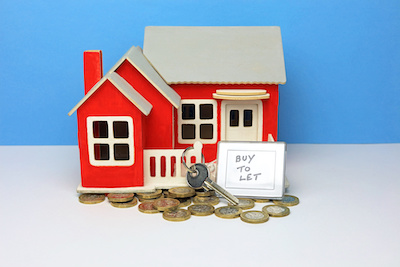Investing in real estate has been a popular avenue for generating income for many years for a lot of individuals.
Among the various real estate investment strategies available, buy-to-let properties are a particularly appealing option for many. This type of investment involves purchasing a property with the primary intent to rent it out, turning a profit from the rental income and potential capital growth over time.
However, like any investment, buy-to-let properties come with advantages and disadvantages that prospective investors should consider carefully before diving in. This post will provide a balanced view to help you make informed decisions about whether this investment route suits your financial goals and risk tolerance. Read on to learn more.
Pros of Investing in Buy-To-Let Properties
Buy-to-let properties can be one of the excellent investment options today. They have several benefits, including the following:
- They Provide A Stable Income Stream
The most evident advantage of investing in buy-to-let properties is the potential for a steady rental income stream. If the property is in a high-demand area, it can yield significant returns that exceed the costs associated with the property. Also, the passive income buy-to-let real estate generates can help supplement your primary sources of revenue.
- There Is A Possibility For Long-Term Capital Growth
Over time, properties generally appreciate in value, which could result in substantial capital gains when you decide to sell. This potential for long-term capital growth has made buy-to-let properties an attractive real estate investment choice for a lot of people.
- Only A Small Amount Of Capital Is Needed
Unlike other investments, buy-to-let properties don’t generally require huge capital. You can enter the market even with a relatively small amount of money on hand since you can borrow to finance the investment and increase your potential returns. This is where various financing solutions enter the picture.
For instance, many investors have started to fund buy-to-let deposit requirements with bridging loan. A bridging loan can serve as a bridge to cover short-term financial gaps. It’s often utilized as a temporary solution when acquiring a property before more long-term financing is in place.
Meanwhile, if you’re looking for long-term financing options, conventional mortgages, home equity loans, and private money loans are some common solutions for buy-to-let investments.
- There Are Tax Benefits
Some countries provide tax advantages for rental property owners. These can include deductions for interest on property loans, property taxes, insurance, and maintenance expenses, which can significantly reduce the cost of owning the property.
Henceforth, if you’re looking to minimize your tax liabilities as a real estate investor, then investing in buy-to-let properties may be an excellent solution.
- You Have Control Over Investments
With buy-to-let properties investment, you’ve got full control regarding your investment. For example, sans a property manager you’ve appointed, you can make decisions about several aspects like tenant selection, rent prices, property management, and others.
Indeed, buy-to-let properties as an investment are helpful to investors (in fact, big stakeholders are jumping in the game as well) who are looking to meet their financial goals.
Cons of Investing in Buy-To-Let Properties
Now that you’re aware of the advantages of investing in buy-to-let properties, it’s time to familiarize yourself with the disadvantages of this type of real estate investment. These can include:
- There Are Certain Liquidity Issues
Real estate properties are considered non-liquid assets. They can take a significant amount of time to be sold or rented out, especially in a slow market. Therefore, this lack of liquidity could pose problems if you need quick access to cash during emergencies.
- There Is A Risk Of Vacancy
There’s always a risk that the property may remain vacant for a certain period, resulting in a lack of rental income. This usually happens when your tenants move out, or the pricing isn’t up to the fair market rent in your area. Unfortunately, void periods or when the property is vacant could cause financial strain, particularly if there are ongoing costs such as a mortgage, maintenance, and property taxes.

- Property Management Responsibilities Can Be A Burden
Renting out and managing a property can be time-consuming and stressful. It involves finding and dealing with tenants, maintaining the property, and ensuring compliance with local property laws. Without a property manager that’ll run the whole show for you, owning a buy-to-let property can be more of a bane for you.
- Investing In Buy-To-Let Properties Require High Initial Costs
The initial costs associated with purchasing a property, including the deposit and legal fees, can be significant. If you don’t have enough capital, investing in buy-to-let properties can be financially draining.
- You Have To Be Mindful Of Certain Interest-Related Risks
Interest rates associated with buy-to-let investments are typically higher than interest rates for owner-occupied homes. This is because lenders consider investment properties to be riskier, as there’s a greater chance that a tenant will default on their rent payments.
Moreover, if you have a variable-rate mortgage on the property, fluctuations in interest rates could affect your mortgage payments and significantly impact your returns.
Although investing in buy-to-let properties comes with certain cons, don’t let that fact prevent you from exploring your options.
Conclusion
Investing in buy-to-let properties isn’t a decision to be taken lightly. It requires careful consideration and a clear understanding of both the potential rewards and the associated risks. With this knowledge in hand, you can decide whether buy-to-let properties are the best investment for your financial situation. Hopefully, you’ll find the points above helpful. All the best.












